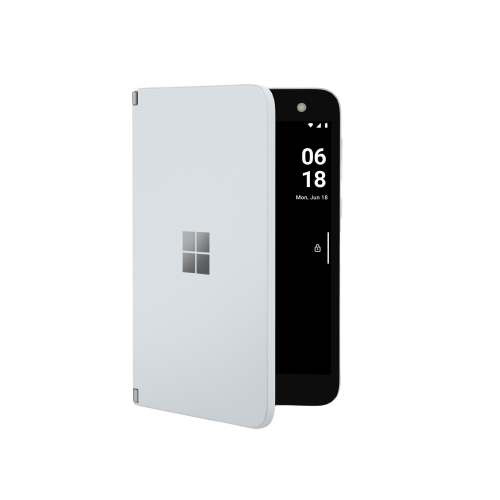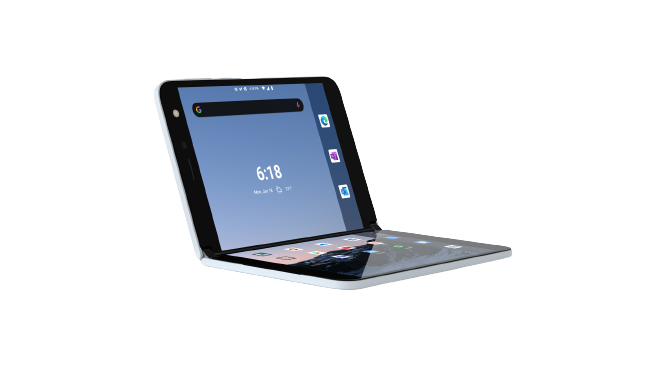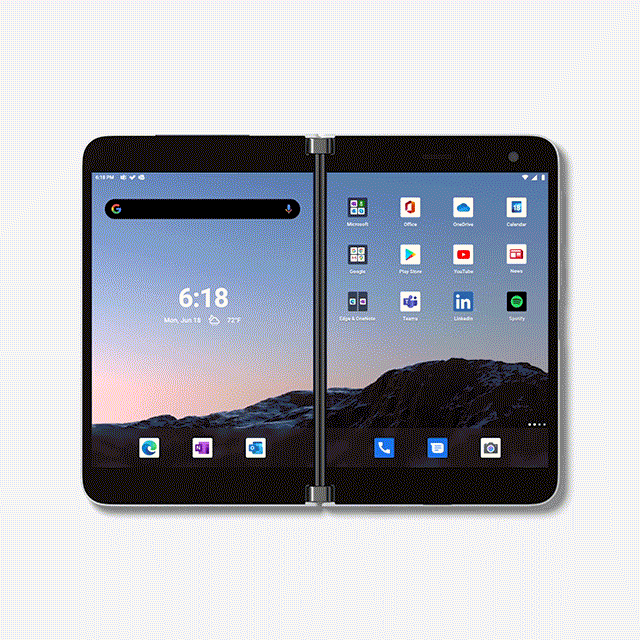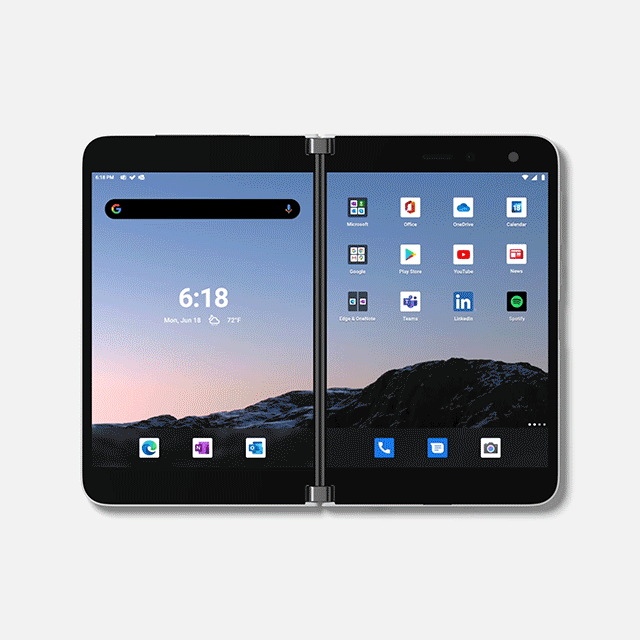
Did the pandemic kill the Surface Duo line?
Did the pandemic kill the Surface Duo line?
This is a completely different post to what we might normally find on this site. The original Surface Duo reached End of Life support on September 10th 2023.
An amazing concept
What is the Surface Duo I hear no-one asking, and that’s part of the problem, but we’ll talk about problems later.
This device was one of the best folio concepts we’ve seen so far. It was designed with Productivity at heart. The idea of 2 distinct screens rather than a single foldable screen wasn’t an accident or an attempt to avoid the issues with foldable screens, it was intentional. The idea that the divider will allow the brain to easily split tasks, it was an amazing concept and it does actually work quite well.
Unfortunately that Productivity goal seems to have been missed by many of the reviewers, comparing it instead to devices like the Samsung Z-Fold, which are aimed more at high-end Content Consumers, people that want to watch YouTube or read this fabulous blog on a bigger screen than they might get on most other devices.
Now I’ve used the Surface Duo for business purposes and there are things that work really well when spread across the two screens, like Microsoft Outlook for example, even the Gmail app works really well, but where this thing shines is when you use the two screens for different applications.
The idea of that split between the screens somehow making you more productive and the idea of using 2 apps at the same time might sound a bit odd, but it does work. It is unfortunate that to really see how good this thing is, you need to have it in your hands, you need to use it for a few days, then you can truly appreciate how great this device actually was and remains to some extent.
I often use something like Youtube on 1 screen and X on another, flipping my attention from one to the other as required. Now in that case, it tends to be when an advert appears in my YouTube viewing time, then I switch to X until the advert has finished. Because both screens are active, the advert doesn’t pause waiting for me to return my focus to it, it continues playing. Presumably the content creator gets a penny or 2 for getting a full advert played yet I don’t waste my time watching the advert instead shifting my attention to the social media application.
Another common use-case for me is a Web Broswer and OneNote, allowing me to make notes when researching things for example.
Now, truth be told, I can do a lot of that on my iPad which I normally keep in landscape orientation anyway, so there is the screen real-estate to open 2 distinct apps at the same time, they don’t always play nice, sometimes the app tries to keep too much of the side menu visible (I’m looking at you OneNote) so I’m left with a very small space to do my note-taking, but it does mostly work. The difference is that the Surface Duo is lighter and can fit in my pocket, the iPad is light, but definitely doesn’t fit in my pocket.

Poorly Executed
I mentioned that reviewers compared this Productivity Tool with Content Consumption devices like the Z-Fold, well that was one problem, but the real problems were of Microsoft’s own doing.
They announced the original Surface Duo on October 2nd 2019 yet it didn’t make it to market until September 2020.
That might not be so bad if it arrived in 2020 with the latest hardware and software available in the Android space. It did not.
The original Surface Duo arrived with hardware that was okay in 2019, it arrived with Android 10, which itself was released on September 3rd 2019, with Android 11 being released about 2 days before the Surface Duo was finally available to buy. That might not be so bad if Microsoft had Android 11 locked and loaded for instant download as people unboxed their shiny new phones, but they did not. Android 11 did not make it to the Surface Duo until January 2022, by which point Android 12 was already 3-4 months old.
The shiny new Surface Duo also arrived with a lot of bugs, not just little bugs but some really annoying bugs that affected usability in some cases.
Microsoft were quick to address those early bugs, but they released a product that was priced to compete with 2020 flagships using 2019 hardware and software. They had a year to fully learn Android 10 and 2019 hardware, so it should have arrived as a highly optimised package, yet it still turned up with bugs. I mean, come on Microsoft, you can definitely do better.

The Pandemic
One thing Microsoft couldn’t control was what happened in 2020 on a global scale.
Now I don’t think we can blame the pandemic for how badly the Surface Duo was received, that was all Microsoft’s doing, but the Surface Duo 2 was a big step forward, it still faced tough reviewers that compared it to Z-Folds but it was better in every measurable way. It stands to reason that Microsoft learned from some of the mistakes surrounding the original Surface Duo and improved, it also stands to reason that a future Surface Duo 3 would be even better. But as of writing, the Surface Duo 3 looks further from a device we can buy than ever before.
The productivity argument
Just to circle back, I genuinely believe the Surface Duo is a fantastic device for productivity, it works as a Content Consumption device, but Productivity is where it starts to beat my iPhone.
However, most consumers don’t buy a device for it’s Productivity smarts, they buy it because they want to take pictures, make video calls and watch YouTube. Most candy-bar phones are better than the Surface Duo for this kind of thing and for those that want YouTube on a bigger screen, but not an iPad, well then there is the Z-Fold, the Pixel-Fold and others.
The people that buy Productivity tools are businesses. The problem with businesses is that their IT departments are going to be squeezed for the near future.

An IT Department is like a country with a Welfare State
Let’s start by saying most businesses do not spend enough on their IT, at least that’s what the IT Managers and Directors would have you think. I tend to agree.
Unless the company is making money from IT which most do not, then the IT department is seen as a necessary cost. Most people in the business know that they need a healthy IT department, but they still see IT as an overhead and usually a bottleneck. Therefore most businesses make the IT department owner jump through hoops for any budget they need. There’s nothing really wrong with that, all departments should need a viable business case if they’re spending money.
The problem with businesses pushing back on the IT budget only really came to bite them when the world was told to stay at home. Suddenly businesses needed more laptops, they needed video conferencing licenses and firewall licences, they needed extra monitors, keyboards, mice, webcam’s, headsets and more. Some companies were forced to accelerate their move to the cloud, some were forced to adopt the cloud long before they intended. Some companies even needed to pay for internet links to be installed in the homes of some of their staff. Some companies would have had to buy extra proxy licenses or Riverbed LAN optimiser licenses, etc. IT departments spent big!
Now all of these additional costs were not planned when the IT department owner was putting together a budget for 2020. Most big companies use pooling for things like Video Conferencing licenses and Firewall licenses believing that only a small percentage of their workforce would need these things at the same time. 2020 changed all of that.
Businesses that were able to do so, turned on the money taps and let the IT department buy all of those extra things they suddenly needed. With lockdowns and working from home extending well into 2021 and even into 2022, IT budgets swelled to levels not seen before.
We can see the same thing in most countries that have an established welfare system, the country was forced to inject money into the state during the pandemic and now that money needs to be clawed back.

The big squeeze
We’ve had to learn to live in a new world and that means that many companies are calling staff back to the office, in many companies, the number of days expected in the office is growing as we get more and more used to this new post-pandemic world.
Companies have models in place, they know that if the worst happens, they have a lot of tools and processes that can help them support mass working from home. However, they also want to claw back some of that over-spend.
Companies are now squeezing IT departments tighter than pre-pandemic times as the company looks to negate all of that over-spend in the coming years. Countries are doing the same, national infrastructure projects are being delayed or cancelled whilst the country tries to balance the books again.
The end of the Surface Duo 3
The original Surface Duo was released late, it had underwhelming hardware and old software, it arrived buggy and came out in a year when most companies were actively encouraging their staff to work from home. Now why does a home worker need a cell phone, especially when the company has spent all that money buying video conferencing licenses?
The Surface Duo 2 turned up in better times, we were learning to live with the pandemic. The hardware had improved but it also arrived with old software. Reviewers were less harsh but it was still compared to the Z-Fold. Big business was starting to demand staff come back to the office and starting to reduce spending.
The Surface Duo 3 would either need to address the Content Consumption vs Productivity argument, perhaps becoming a Surface Fold or something like that or push hard for those business dollars.

The great tech slump of 2022
What 2022 actually brought us was a worsening of the world political landscape with some neighbouring countries turning up uninvited. Energy costs sky-rocketed, companies cut back on big projects, tech companies started laying off huge numbers of staff across the globe.
Some of the people that are no longer with Microsoft are believed to have been quite important to any future success for the Surface Duo line. Many consumers are a little more careful about where they spend their money, especially when looking at the ultra-high-end devices like how the Surface Duo was priced and businesses are feeling the pinch as well. Businesses had already started squeezing IT Departments, now with increasing costs they’ll need to squeeze harder still.
Essentially, the Surface Duo line was built for the Enterprise but the Enterprise hasn’t been in a position to spend money on flagship cell phone devices on a large scale pretty much throughout the entire life of the Surface Duo so far.
Consumers want content more than Productivity and so when they see reviews comparing a Surface Duo to the Z-Fold, you know what, it doesn’t stack up for most of them.
Without businesses and consumers, why would Developers make apps that take advantage of the Surface Duo’s unique concept?
The Surface Duo was an amazing concept, bringing the best of Microsoft and Android together but it arrived at the wrong time and was failed by terrible execution.
